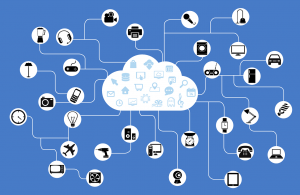We are on the verge of a technological breakthrough: the Forth Industrial Revolution. The fundamental elements of the Fourth Industrial Revolution prove that a remodeling of our personal, social and business life will ultimately occur. But how ready are we to embrace these ongoing crucial changes?
Back at the beginnings…
Looking back at the beginnings, the Industrial Revolution steered the wheel to new manufacturing process in the 18th century, using steam, water and early mechanical production equipment to improve productivity. The transition in to the Second Industrial Revolution, also known as the Technological Revolution, used electricity for a rapid development translated by mass production and the division of labor. When manufacturing went digital, the Third Revolution was there, using electronics and information technology for automated production.
…and back again to the now
The Forth Industrial Revolution is occurring as we speak. Every shift of every Industrial Revolution was triggered by innovation. Specialists agree that cloud and IoT are the force behind the Forth Revolution, gradually becoming the new normal. It is not described as an episode but rather as progressive development. Business welcomed innovation, gaining massive assets from cloud computing: costs savings, agility, reliability, strategic edges (over competition). The digital landscape is about to become the limitless base for business of all sizes.
IoT – the foundation of the 4th IR?
Another key technology driving, finding its way into production, is the Internet of Things. IoT revolutionizes the way we interact with each other and the world around us through integrated communication made simple based on wearable devices. ROPARDO is among the first software development companies in Romania to deliver IoT solutions with a series of applications in healthcare, manufacturing, and heavy industry. ROPARDO is a valuable trendsetter creating and shaping the future with its cutting edge technologies within the R&D, actively participating in the creation of the Fourth Industrial Revolution .
Branded ‘Industry 4.0’ by the German far-seers as a collection of cyber-physical systems, Internet of things and cloud computing, the 4th Industrial Revolution is a smart, modular factory, bringing challenges and opportunities to the stakeholders. This smart factory is designed taking into consideration sustainable and service-oriented business practices.
Opportunities:
- Higher global income
- Improved life quality
- Increased efficiency (work & personal life)
- Limitless
Challenges:
- The inability to adapt
- Cyber-security issues
- Societies fragment as a consequence of inequity in labor markets
The dimensions of the impact: from business to people
Changes are momentous, being disruptive in every industry on the Globe. They are historic in terms of speed, scope and size. The speed of technological industry has become the driving force of social evolution. Years ago, just thinking of artificial intelligence markers such as nanotechnology, quantum computing, 3-D printers, robotics, IoT (Internet of Things), self-driving cars seemed science fiction. Klaus Schwab, founder of ‘World Economic Forum’ stated that “the acceleration of innovation and the velocity of disruption are hard to comprehend or anticipate and that these drivers constitute a source of constant surprise, even for the best connected and most well informed.”
Still in the early stages of development, the sweeping change is revolutionizing many companies and will certainly catch others by surprise. Many industries embrace the new technologies as innovative ways to deliver successful products according to high needs, creating a closer interaction with the customers. The end consumer’s acquired behavior regarding the new technologies, forces companies to adapt, to improve, to develop and to deliver exceptional value at competitive prices. This way customers become smarter, faster and simpler.
The impact on business depends on the degree of acceptance of change, happening at a fast pace. Business success depends overwhelmingly on their ability to reinvent themselves. Agile businesses, such as ROPARDO, develop solutions for various needs/requests: Manufacturing and Logistics, Healthcare & Fitness, Travel & Tourism, e-Commerce, Health & Pharma, Automotive, Telecommunication, Financial Services and Banking. Organizations facing the digitalized era must be innovative, able to rethink and to adjust their talent, culture and organizational forms. Innovation is an ever-changing environment, challenging even the most hi tech companies.
The power of these changes will leave a trace on the human factor, too. It will affect what we do, who we are, how we interact and create relationships. Despite the immeasurable improvement over the last fifty years, one question persists – whose interests are being answered to? It seems that the Fourth Industrial Revolution poses two ways: a big opportunity and a large threat to a favorable future.
The new developed digital technologies are all around. People are connected by mobile devices, having limitless access to technology, to storage capacity and processing power, all being taken for granted. The Fourth Industrial Revolution is a contemporary reminder that technology changes greatly and fast.
Tailor the change
Today we assist to this huge wave outlined by the digitization of our economy, our knowledge and our lives. Technology and society complete one another. Our today world faces a continuous progress impossible without change. We have the responsibility to choose what to do, how to approach and tailor the Fourth Industrial Revolution in the best of our interest. Both individual and groups must benefit from these ongoing transformations. The consequences of the Fourth Industrial Revolution are challenging and sometimes disruptive but we must learn to embrace the change whilst empowering the people behind the machines.

